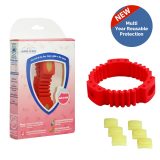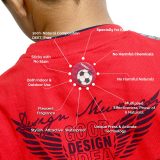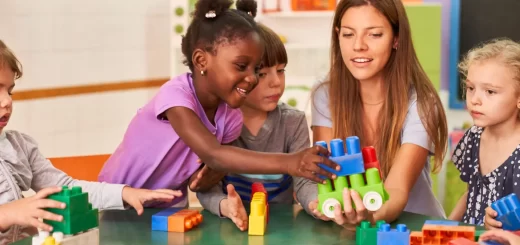Protecting Children from H3N2 Virus: Effective Measures and Safety Guidelines
Introduction
The H3N2 virus is a strain of the influenza A virus that can cause illness in humans, including children. As a parent or guardian, it is crucial to take proactive measures to protect your children from contracting this virus. By implementing effective preventive measures, you can significantly reduce the risk of your child falling ill and ensure their well-being. In this article, we will discuss various measures you can take to safeguard your children from the H3N2 virus.
1. Understanding H3N2 Virus
H3N2 is a subtype of the influenza A virus that can cause severe respiratory illness, particularly in children and the elderly. It spreads through respiratory droplets and can lead to symptoms such as fever, cough, sore throat, body aches, and fatigue.
2. Importance of Vaccination
Vaccination is one of the most effective ways to safeguard children from the H3N2 virus. Ensure that your child receives the annual flu vaccine, which includes protection against the prevalent strains, including H3N2. Vaccination reduces the risk of contracting the virus and minimizes the severity of symptoms if infection occurs.
3. Encouraging Good Hygiene Practices
Teach your children the importance of good hygiene practices to prevent the spread of the H3N2 virus. Encourage regular handwashing with soap and water for at least 20 seconds, especially before meals, after using the restroom, and after coughing or sneezing. If soap and water are unavailable, use an alcohol-based hand sanitizer.
4. Promoting a Healthy Lifestyle
A healthy lifestyle can strengthen your child’s immune system and reduce their vulnerability to the H3N2 virus. Ensure they get sufficient sleep, eat a balanced diet rich in fruits and vegetables, and stay hydrated by drinking an adequate amount of water. Regular exercise and minimizing stress levels also contribute to a strong immune system.
5. Maintaining a Clean Environment
Regularly clean and disinfect frequently touched surfaces in your home, such as doorknobs, light switches, and electronic devices. Use EPA-approved disinfectants to eliminate any potential H3N2 virus particles. Encourage your child to keep their personal belongings clean and avoid sharing items like utensils, cups, and towels.
6. Educating Children about the Virus
Take the time to explain the H3N2 virus to your children in an age-appropriate manner. Help them understand the importance of hygiene practices, vaccination, and other preventive measures. Use simple and engaging explanations to ensure they grasp the concept and feel empowered to protect themselves.
7. Recognizing Symptoms and Seeking Medical Help (Continued)
symptoms, consult a healthcare professional promptly. Early detection and treatment can help prevent complications and ensure a faster recovery. Follow the medical advice provided and administer any prescribed medications as directed.
8. Implementing Social Distancing Measures
Social distancing plays a crucial role in preventing the spread of the H3N2 virus. Encourage your children to maintain a safe distance from individuals who are coughing, sneezing, or displaying flu-like symptoms. Avoid crowded places and limit close contact with others, especially during flu seasons or outbreaks.
9. Addressing School and Daycare Concerns
Schools and daycare centers can be breeding grounds for viruses. Stay informed about any reported cases of H3N2 virus within your child’s school or daycare. Follow the guidelines and recommendations provided by the school administration or health authorities. Ensure that the facility has proper protocols in place for hygiene, sanitation, and illness prevention.
10. Dealing with Travel-related Risks
Traveling can expose your child to a higher risk of contracting the H3N2 virus. If you’re planning a trip, especially during flu seasons, take necessary precautions. Avoid close contact with sick individuals, practice good hygiene during travel, and consider wearing masks in crowded areas, such as airports or public transportation.
11. Building Immunity through Nutrition
A healthy diet can fortify your child’s immune system against the H3N2 virus. Provide a variety of nutrient-rich foods, including fruits, vegetables, whole grains, and lean proteins. Foods rich in vitamins C and D, zinc, and antioxidants can specifically enhance immune function. Consult with a healthcare professional or a registered dietitian for personalized dietary recommendations.
12. Boosting Mental and Emotional Well-being
Stress and anxiety can weaken the immune system, making your child more susceptible to infections. Foster a supportive and positive environment at home, and encourage open communication. Engage in activities that promote relaxation and emotional well-being, such as mindfulness exercises, hobbies, and spending quality time together as a family.
13. Engaging in Regular Exercise
Regular physical activity not only supports overall health but also strengthens the immune system. Encourage your child to engage in age-appropriate exercises and activities. Outdoor play and sports can offer additional benefits by promoting fresh air and social interaction while adhering to safety guidelines.
14. Utilizing Technology for Remote Learning
During periods of increased virus transmission, remote learning can be a safer alternative to in-person education. Support your child’s learning journey by utilizing technology for virtual classrooms, online resources, and educational apps. Ensure they have access to a suitable learning environment and maintain a balance between screen time and other activities.
15. Conclusion
Safeguarding children from the H3N2 virus requires a multi-faceted approach. By implementing the preventive measures discussed in this article, you can significantly reduce the risk of your child falling ill. Remember the importance of vaccination, good hygiene practices, maintaining a clean environment, and promoting a healthy lifestyle. Stay informed, educate your children, and seek medical help when necessary. By prioritizing their well-being, you can help keep your children safe and healthy.
Frequently Asked Questions (FAQs)
- Can the flu vaccine protect against H3N2? Yes, the annual flu vaccine includes protection against prevalent strains, including H3N2. It reduces the risk of contracting the virus and minimizes symptom severity.
- Is H3N2 more dangerous for children than adults? Children, especially those with underlying health conditions, are at higher risk of complications from H3N2. However, it















